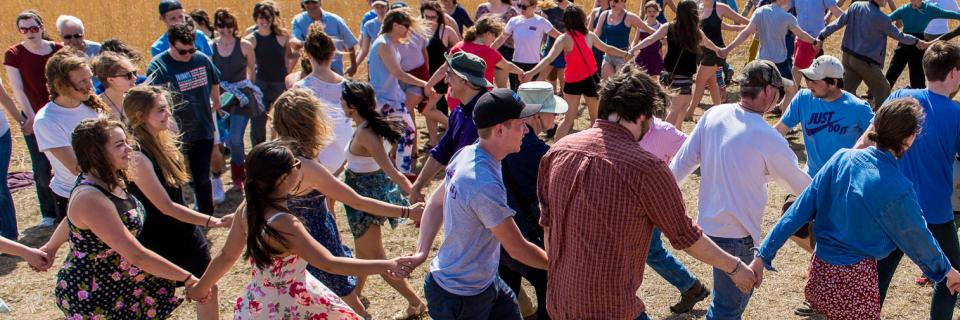Some words—bank, government, weather, gun—give off a decidedly ambivalent vibe. It all depends. Others are more clearly negative—pollution, debt, cult—or positive—love, warmth, faith. For me, the word community is in the “positive” category.
I would rather not get into the definition game; books have been written about it. Maybe we can get away with saying, “you know community when you see it.” In any event, for most people, most of the time, community conjures thoughts and feelings that are good, supportive, comfortable. Those who find it suffocating to live in places where the person next door knows too much about them will generally not complain about community; instead, their complaint will center on small towns, on nosy neighbors, or on not having enough to do. In fact, we often hear and read laments about the decline of community feeling in the contemporary world. Most of us think it’s good to live in a place that has a community feel about it, whether that place is an urban neighborhood, a rural church parish, or a village.
Rootstalk is a publication of Grinnell College’s Center for Prairie Studies, whose three guiding principles—as it says on our letterhead—are community, sustainability, and place. By definition then, we at Rootstalk are interested in community—its meaning, its shape, and our ability to keep it healthy. What experiences create a feeling of community? What goals can bring a community together? What strains can divide a community? What role do memory and tradition play in maintaining a community?
This issue of Rootstalk offers several pieces of content that address such questions. The short essays by Bridget Brandt, Sam Cox, Randall Hotchkin, and Allan and Shirley Moyer in fact came out of a writing workshop, centered on defining community, which we held last spring as part of a class at Grinnell College co-taught by Rootstalk’s editor, Mark Baechtel, and myself. The students in our class first took their own writing workshop, facilitated by noted northeast Iowa writer and publisher, Robert Wolf (whose new book, Building the Agricultural City: A Handbook for Rural Renewal, is reviewed in this issue by Fred Kirschenmann). Bob, who has led writing workshops around the country, had each student share a personal story with the class. These oral stories became the basis for writing, as Bob coached each student in finding their voice and creating an engaging narrative structure. Next, we invited residents from the town of Grinnell (where Grinnell College is located) to participate in the class for several sessions. Each community member was paired with a student, whose task it was to help them in the way Bob had helped the students. The stories that came out of these sessions provide glimpses of the community feeling in Grinnell. We decided to include in this set a photo essay by one of the students in the class, Katie Hess, as it deals with an after-school arts program in Grinnell.
There are other content-pieces in this issue which deal with community. An essay from Mary Kay Shanley explores the evolution of newspaper obituaries as an expression of community life. Joshua Lockyer tells us about the Dancing Rabbit Ecovillage in northeast Missouri—an intentionally-formed community whose residents are transforming a piece of former farmland into a space where they can collectively realize a new vision of society, in the process finding ways to dramatically shrink their collective carbon footprint. An autobiographical essay from Dartanyan Brown begins in the Mahaska County, Iowa, coal mining town of Buxton, a racially integrated community where his grandmother was born. Her experience there shaped Dartanyan’s sense of community throughout his life.
Not all of the content in the fall issue deals with community, but—as
usual—all of it deals with life in the prairie region, which we like
to think of as a wider community of readers. We hope you enjoy
everything in the issue, and we hope that what you see here provokes you
to frame your own thoughts about what it means to live in concert with
other humans. Let us hear from you. For guidelines on sending us your
work, go to the submit page.
 to celebrate the National Water Dance in 2016.](https://rootstalk.blob.core.windows.net/rootstalk-2018-fall/grinnell_28290_OBJ.jpg)
The Grinnell community gathers at the College’s Conard Environmental Research Area to celebrate the National Water Dance in 2016.


